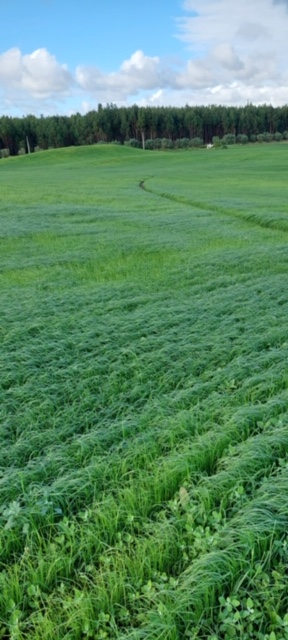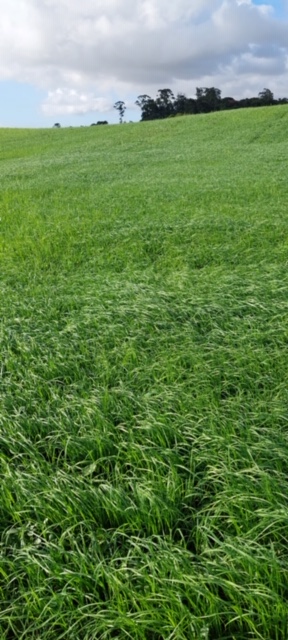Introduction to the challenge addressed
Due to a combination of factors, the price of feed has undergone successive increases that sometimes make production costs unbearable. So, nowadays, the ability of farms to produce feed for their animals can be a key factor in their profitability. Beside this factor, it is also necessary to find alternatives to conventional feeds, being the alternative in this case, using an efficient crop in terms of both water and fertilizer consumption. The successive increase in feed prices has an impact on the production costs of a farm, which can lead to farm unviability. Therefore, it is necessary to find more efficient and cheaper feed alternatives.
Description of the innovation
Teff is a graminacea of the Poaceae family, of Ethiopian origin, where it is used for grain production. Apart from being known as a grain producer, it can be used as a forage crop, allowing various harvests for the production of hay, silage or for direct grazing. The interest in this crop arises because it is a very efficient crop, with low levels of water and fertiliser consumption and good levels of production (13 to 18 ton/ha) and quality (12-16% protein with 90% dry matter).
The Teff crop should be sown in mid-May, and it is possible to obtain 3 to 5 cuttings by mid-September. The first cutting should take place between 40 to 50 days after sowing. If the producer chooses to use direct grazing on this crop, he should consider doing so after 35 to 40 days after sowing. The main benefit of this crop is to produce an efficient feed with good production levels and nutritional quality for beef cattle, using fewer resources such as water and fertilizers. It is also a crop that is tolerant to situations of limited water availability. The critical period for this crop is at sowing, due to the small size of the seeds, so it is necessary to prepare the soil well and consider the season in which this crop is planted, as it is more sensitive to low temperatures and frost, being a spring/summer crop.
Impact on farm performance
The main factor of success is to obtaining beef cattle feed at a lower price that promotes the profitability of farms without damaging the nutritional levels in the beef cattle diet.
The following lessons can be learnt from this innovation:
- Respect the sowing, cutting and direct grazing periods
- Prepare the soil so that this crop will germinate. Consider seed-bedding, sowing depth (no more than 0.3 cm). Direct sowing is recommended.
The most important thing would be to understand the influence of this crop on the beef cattle, since productive field data are already studied. Therefore, one can analyse the value of the forage for beef cattle directly by nutritional analyses to it and indirectly by assessing the physical condition of the animals after a period of being fed with this crop.
Main impacts are:
- Producing beef cattle feed on the farm means less dependence on more and more costly feed on the market. Therefore, Teff is an interesting crop for this purpose. It is a crop with few demands, and because it is so efficient in the use of resources, it turns out to be a more profitable alternative food when used as cattle feed.
- The quality indicators of this crop suggest that it does not have any type of anti-nutritional factor for beef cattle, and that it has good nutritional values for them (12-16% protein with 90% DM).
- More efficient use of water and fertilizer resources, without wasting them.



Further information
https://issuu.com/ruminantes/docs/book_44-ld/s/14632887
Author: Magda Fontes Aguiar – University of Lisbon - FMV